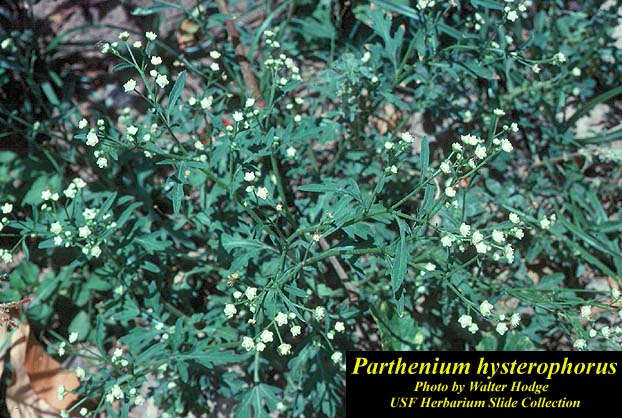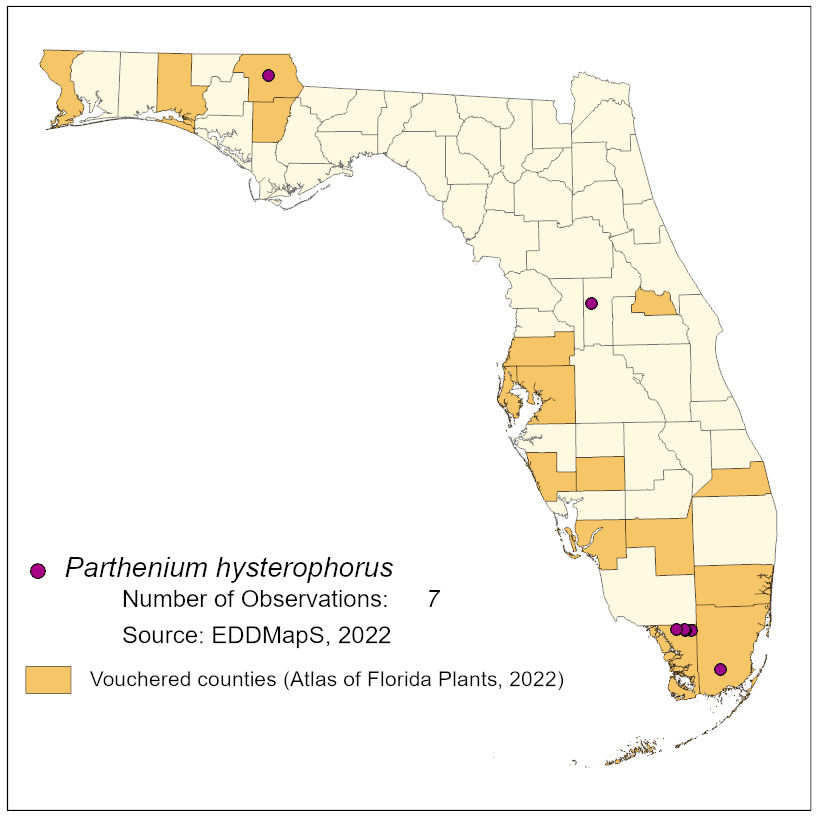Common Name: Santa Maria feverfew
Family: Asteraceae
Common Synonyms: Parthenium pinnatifidum, P. lobatum
USDA Hardiness Zone: NA
Growth Habit: Large herb
Origin: Mexico, Central and South America, and the Caribbean
FISC Category: -
FDACS Listed Noxious Weed: No
Introduction Date: Earliest Florida herbarium specimen from 1941
IFAS Assessment:

An annual, upright, herbaceous plant to 1.5 m tall with green stems having distinct longitudinal grooves and covered in stiff hairs. Leaves are simple, alternate, and deeply incised (more so on lower branches). Flowers are small, white, and arranged in tight heads that are clustered at the tips of branches.
Disturbed sites and agricultural fields
Contact with this plant can cause dermatitis, watery eyes, and swelling of nose and mouth tissue. Produces allelopathic chemicals that suppress crop and pasture plants and allergens that affect humans and livestock. A major invasive weed in many parts of the world. It is toxic to cattle and can taint the meat and milk if consumed. Seed banks have been found to survive more than 15 years.

Hand-pulling is difficult due to the contact dermatitis. Studies are conflicting on the effectiveness of herbicides like glyphosate and 2,4-D.
http://keys.lucidcentral.org/keys/v3/eafrinet/weeds/key/weeds/Media/Html/Parthenium_hysterophorus_(Parthenium_Weed).htm
Harmful and beneficial aspects of P. hysterophorus: an update (http://www.ncbi.nlm.nih.gov/pmc/articles/PMC3339593/)
Tamado T, Milberg P. Control of parthenium (Parthenium hysterophorus) in grain sorghum (Sorghum bicolor) in the smallholder farming system in eastern Ethiopia. Weed Technol. 2004,18:100?105. doi: 10.1614/WT-03-033R